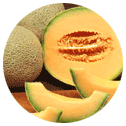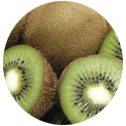 Full List of Fruits
Full List of Fruits  Pulasan Fruit
Pulasan Fruit Pulasan Fruit
Origin - Pulasan originated from Malaysia.
Scientific Name - Nephelium mutabile
Appearance - This ovoid dark red color fruit has a thick, leathery rind closely set with narrowed, blunt tipped tubercles. The straight spines of the fruit grow up to 1 cm long. The oblong shaped seed appears to be flattened on one side with grayish brown in color.
Pulasan fruit is an exotic and delicious fruit that is native to Southeast Asia. It is a part of the rambutan family and is closely related to other tropical fruits like lychees and longans. Pulasans are medium to large in size and have a thin, leathery skin. The skin can range from yellow to a light pink or even purple, and it's covered in soft spines. When the skin is peeled back, a white, juicy flesh is revealed. This flesh is sweet and very fragrant. It has a taste that is similar to a mix of a grape and a pear, but with a hint of citrus.
The pulp of the pulasan fruit is full of antioxidants, minerals, and vitamins, making it an incredibly nutritious treat. It contains high levels of vitamin C, which can help to boost the immune system and protect cells from damage. It also contains some B vitamins, which are essential for energy production and healthy metabolism. Additionally, the fruit has a good amount of dietary fiber, which can aid in digestion.
Pulasan can be eaten raw, but it is often used in desserts and drinks. It can be made into juices, jams, and preserves. It can also be added to smoothies, cakes, and other baked goods. Since the fruit has a strong flavor, it can easily overpower other ingredients, so it is important to use it sparingly.
| Vitamins (Per 100 g) | |
| Vitamin C | 11.1 mg |
| Parameters ( Per 100 g) | |
| Calcium | .010 mg |
| Proteins | 0.81 g |
| Carbohydrates | 12.9 g |
| Iron | .002 mg |
The pulasan fruit is used in many traditional Asian dishes. It is often served as a part of desserts or with ice cream. It can also be used to make a sweet and sour sauce for meats. In Malaysia, pulasan fruit is used to make a traditional dish called Pulasan Sambal, which is a spicy condiment served with fish or chicken.
In addition to its culinary uses, the pulasan fruit can also be used medicinally. The juice of the fruit has anti-inflammatory, anti-bacterial, and anti-fungal properties and can be used to treat skin conditions such as eczema and acne. Pulasan fruit can also help to reduce fevers and relieve digestive issues.
Overall, the pulasan fruit is an incredibly versatile fruit with many applications. It can be used in cooking and baking, as well as for medicinal purposes. With its sweet and acidic flavor, the pulasan fruit is a great addition to any recipe.
Pulasan is usually eaten fresh, though it resembles much like Rambutan, it is different from Rambutan and haves its own characteristics. The wood is light red, harder and heavier than that of rambutan. The decotion of the fruit is highly used bathing fever patients. There are two varieties of Pulasan one is dark red and the other one is light red.
The dark red fruit haves a seed that separates easily from the flesh whereas the light red fruit haves a seed that sticks on to the flesh of the fruit.
How to eat? On by twisting the fruit with both the hands, the fruit can be opened and the flesh can be consumed.
Propagation of the pulasan fruit is an essential part of the plant's growth and overall production. Pulasan is propagated through cuttings, air layering, seedlings, and even grafting. Cuttings are the most common and efficient way of propagating the pulasan fruit. To propagate through cuttings, the stem of an adult tree is cut and the cutting is planted in the soil. The cutting should be planted with the bud facing up in the soil, and the soil should be kept moist.
Air layering is another way to propagate pulasan. This method involves taking a cutting from the stem of the tree and then wrapping it in a wet cloth. The cloth should be kept moist and tied in place for several weeks. Once the cutting is rooted, it can then be planted in the soil.
Seedlings are another method of propagating pulasan fruit. To propagate from seedlings, the seeds should be planted in a pot with fertile soil. The soil should be kept moist and the seedlings should be kept in a sunny location. Once the seedlings reach a certain size, they can be transplanted into the soil.
Grafting is another way to propagate pulasan fruit. Grafting involves taking a cutting from the stem of a mature tree and attaching it to the rootstock of another tree. This method helps to ensure that the pulasan fruit will be of high-quality and will grow vigorously.
Propagating the pulasan fruit will ensure that the plant continues to thrive and produce a high-quality crop. It is important to keep the soil moist, provide the plant with plenty of sunlight, and make sure the cuttings have been properly rooted before planting them in the soil. When done correctly, propagating pulasan fruit can help increase the yield of the crop.












 Pulasan Fruit
Pulasan Fruit 



